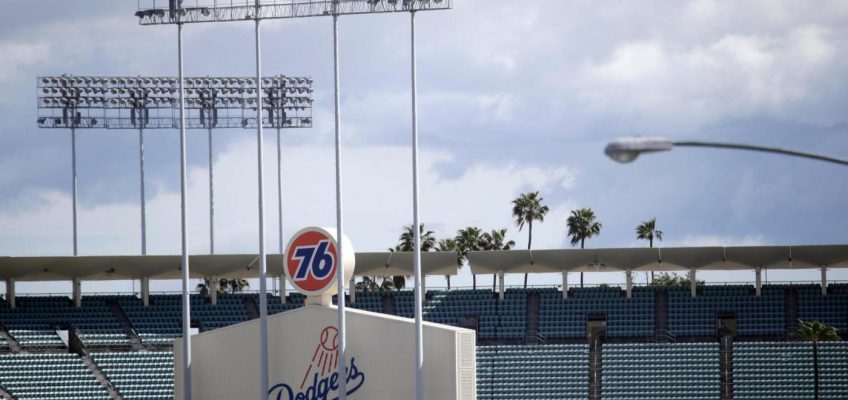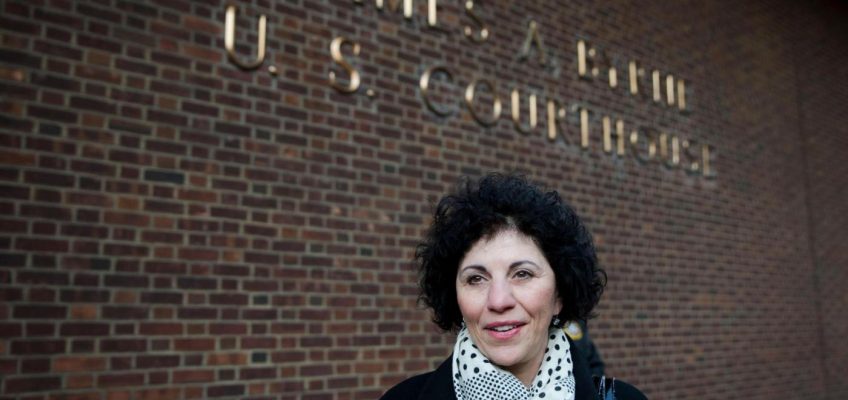By JIMMY GOLEN, Associated Press
BOSTON (AP) — Dozens of widows and other caregivers for former NFL players diagnosed with CTE say a published study is insulting and dismissive of their experience living with the degenerative brain disease that has been linked to concussions and other repeated head trauma common in contact sports like football.
An open letter signed by the players’ wives, siblings and children says the study published in the May 6 issue of Frontiers in Psychology suggests their struggles caring for loved ones was due to “media hype” about chronic traumatic encephalopathy, rather than the disease itself. The implication that “caregiver concerns are ‘inevitable’ due to ‘publicity’ is callous, patronizing, and offensive,” they said.
“The burden we experienced did not happen because we are women unable to differentiate between our lived experience and stories from TV or newspaper reports,” they wrote in the letter. “Our loved ones were giants in life, CTE robbed them of their futures, and robbed us of our futures with them. Please don’t also rob us of our dignity.”
The pushback was led by Dr. Eleanor Perfetto, herself a medical researcher and the widow of former Steelers and Chargers end Ralph Wenzel, who developed dementia and paranoia and lost his ability to speak, walk and eat. He was first diagnosed with cognitive impairment in 1999 — six years before Pittsburgh center Mike Webster’s CTE diagnosis brought the disease into the mainstream media.
“My own experience, it just gave a name to what I witnessed every day. It didn’t put it in my head,” Perfetto said in an interview with The Associated Press. “It gave it a name. It didn’t change the symptoms.”
The study published last month asked 172 caregivers for current and former professional football players “whether they believed their partner had ‘CTE.’” Noting that all of the respondents were women, Perfetto questioned why their experiences would be minimized.
“Women run into that every day,” she said. “I don’t think that’s the only factor. I think the motivation is to make it seem like this isn’t a real issue. It’s not a real disease. It’s something that people glommed on to because they heard about it in the media.”
Reds, rain sink Twins below .500
The Thunder know an NBA title is just 1 win away. They’re trying to keep their minds on the Pacers
Frederick: Kevin Durant trade makes sense for Timberwolves … if the price is right
Another quick major chance for top-ranked Nelly Korda when Women’s PGA tees off in Texas
Expect low scores at TPC River Highlands, but Scottie Scheffler says Travelers Championship isn’t ‘easy’
Hopes for study ‘quickly turned to disappointment’
The letter was posted online on Monday under the headline, “NFL Caregivers to Harvard Football Player Health Study: Stop Insulting Us!” It had more than 30 signatures, including family of Hall of Famers Nick Buoniconti and Louis Creekmur.
It praises the study for examining the fallout on loved ones who weathered the violent mood swings, dementia and depression that can come with the disease. The letter says the study gets it wrong by including what it considers unsupported speculation, such as: “Despite being an autopsy-based diagnosis, mainstream media presentations and high-profile cases related to those diagnosed postmortem with CTE may have raised concerns among living players about CTE.”
The letter said these are “insulting conclusions that were not backed by study evidence.”
“Rather than exploring the lived experiences of partners of former athletes, they instead implied the partners’ anxiety was caused by watching the news … as if the media is to blame for the severe brain atrophy caused by CTE in our loved ones,” they wrote.
Study authors Rachel Grashow and Alicia Whittington said in a statement provided to the AP that the goal of their research is “to support NFL families, especially those caring for affected players or grieving for lost loved ones.”
“We regret if any of our work suggested otherwise,” they said. “Our intent was not to minimize CTE — a disease that is far too real — but to point out that heightened attention to this condition can intensify existing concerns, and that symptoms attributed to CTE may, in some cases, stem from other treatable conditions that also deserve recognition and care.”
But Perfetto feared the study was part of a trend to downplay or even deny the risks of playing football. After years of denials, the NFL acknowledged in 2016 a link between football and CTE and eventually agreed to a settlement covering 20,000 retired players that provided up to $4 million for those who died with the disease. (Because it requires an examination of the brain tissue, CTE currently can only be diagnosed posthumously.)
“Why would a researcher jump to ‘the media’ when trying to draw conclusions out of their data, when they didn’t collect any information about the media,” Perfetto told the AP. “To me, as a researcher, you draw the implications from the results and you try to think of, practically, ‘Why you come to these conclusions? Why would you find these results?’ Well, how convenient is it to say that it was the media, and it takes the NFL off the hook?”
‘By players, for players’
The caregivers study is under the umbrella of the Football Players Health Study at Harvard University, a multifaceted effort “working on prevention, diagnostics, and treatment strategies for the most common and severe conditions affecting professional football players.” Although it is funded by the NFL Players Association, neither the union nor the league has any influence on the results or conclusions, the website says.
“The Football Players Health Study does not receive funding from the NFL and does not share any data with the NFL,” a spokesperson said.
Previous research — involving a total of more than 4,700 ex-players — is on topics ranging from sleep problems to arthritis. But much of it has focused on brain injuries and CTE, which has been linked to contact sports, military combat and other activities that can involve repetitive head trauma.
When he died with advanced CTE in 2012 at age 69, Wenzel could no longer recognize Perfetto and needed help with everyday tasks like getting dressed or getting out of bed — an added problem because he was a foot taller and 100 pounds heavier than she is. “When he died, his brain had atrophied to 910 grams, about the size of the brain of a 1-year-old child,” the letter said.
Former Auburn and San Diego Chargers running back Lionel “Little Train” James, who set the NFL record for all-purpose yards in 1985, was diagnosed with dementia at 55 and CTE after he died at 59.
“Treatable conditions were not the reason Lionel went from being a loving husband and father to someone so easily agitated that his wife and children had to regularly restrain him from becoming violent after dodging thrown objects,” the letter said. “They were not likely to be the driving force behind his treatment-resistant depression, which contributed to alcoholism, multiple stays in alcohol rehabilitation treatment centers, arrests, suicidal ideation, and ultimately, his commitment to a mental institution.”
Kesha James told the AP that she would disable the car to keep her husband from driving drunk. She said she had never spoken of her struggles but chose to tell her story now to remove the stigma associated with the players’ late-in-life behavior — and the real-life struggles of their caregivers.
“I have videos that people probably would not believe,” James said. “And I’ll be honest with you: It is nothing that I’m proud of. For the last three years I’ve been embarrassed. I’m just going public now because I do want to help bring awareness to this — without bringing any shame to me and my kids — but just raise the awareness so that no other family can experience what I did.”




